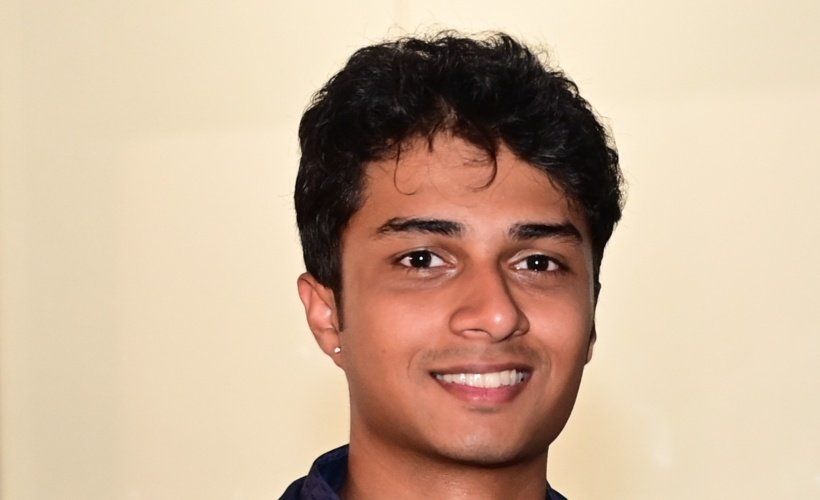
Iraj Shet’s Nirmitsu Design Labs is redefining how Goa designs, builds, and dreams through the power of 3D printing
Every object has a story. Ours begin at the intersection of imagination and engineering, says Iraj Shet, co-founder, Nirmitsu Design Labs
When Iraj Shet speaks about design and manufacturing, there’s a rare blend of curiosity and precision in his tone. It reflects a mind shaped by both the art and science of creation. “As a kid, I used to watch How It’s Made on Discovery Science,” he recalls. “That is where I first learned about processes like injection moulding, casting, and forging. It made me realise there is this whole world behind the everyday objects we use.” That fascination eventually evolved into Nirmitsu Design Labs, a homegrown venture that’s redefining 3D printing and additive manufacturing in Goa.
Iraj’s journey into engineering and entrepreneurship began long before Nirmitsu took form. “In school, physics really caught my attention back in seventh grade,” he says. “The idea that everything connects through simple principles at a microscopic level completely changed how I saw things. I also loved to draw from a very young age, and I still do. That side of me naturally pulled me toward design and anatomy. In a way, studying the human body and studying machines aren’t that different; both are about understanding how systems come together and function.” That blend of curiosity and creativity naturally led him toward mechanical engineering.
At Manipal Academy of Higher Education, two courses left a lasting mark on him: Engineering Drawing and Basic Mechanical Engineering. “They laid the foundation for how I think and work today. Those subjects taught me the importance of precision, proportion, and the reasoning behind every line in a drawing,” he reflects. These lessons continue to guide his design decisions even today. Later, at the University of Strathclyde in Glasgow, his exposure deepened. “One of my first courses there was Engineering Design A/B. We were asked to work in teams to design a Building Integrated Wind Turbine System; ours was a vertical-axis design. It was a competitive course, and to be honest, our turbine didn’t perform as well as we had hoped; we actually finished last. But that experience taught me more about teamwork, design iteration, and problem-solving than any textbook could. It was one of those early lessons that shaped how I approach challenges today.” 
It was his final-year dissertation that truly transformed his perspective. His project, The Study of the Use of 3D Printing in the Manufacture of Lab Equipment, involved reverse-engineering and redesigning a micropipette. “The traditional version cost around £300, while mine cost under £30 and delivered better precision after ten iterations,” he says. “That project completely changed how I saw manufacturing and shot my interest in 3D printing to no limit.”
That fascination would soon turn into Nirmitsu Design Labs. “I noticed that India still hadn’t adopted additive manufacturing the way it is done abroad,” Iraj explains. “It is growing slowly, but it is growing nonetheless, and we are all here for it.” The word Nirmitsu comes from the Sanskrit nirmiti, meaning ‘to create,’ a fitting reflection of the company’s philosophy. “We believe every product, no matter how small, should be the result of thoughtful engineering and aesthetic intent,” he says. “We combine innovation and functionality, making sure that what we create not only performs well but also adds lasting value.”
But starting young wasn’t easy. The early challenges had more to do with perception than production. “The biggest hurdle was convincing clients to believe in 3D printing,” Iraj admits. “Many people are still very comfortable with traditional manufacturing methods. But those come with their own challenges: high mould costs, long lead times, and huge investments. With 3D printing, you can have your part ready in less than a week, at a fraction of the cost.”
His first major breakthrough came from an unexpected connection. “I met a marketing manager from a casino at a trade convention in Goa,” he says. “He was curious about using 3D printing for event mementos. After successfully manufacturing those, I was introduced to their Marine Engineering Team, and that opened a whole new direction for us.” What started with crafting mementos soon expanded to producing custom lamp shades for the casino’s stairwell lighting. “Today, every lamp shade on that stairwell is manufactured at Nirmitsu Design Labs, and we now serve as a trusted supplier for their custom spares, often delivering components within two days of receiving a sample.”
One of Nirmitsu’s proudest creations is the Super Stingray, a 3D-printed drone built entirely in-house. “We wanted to push the limits of the 3D Systems Titan 1070 EXT and manufacture a drone that weighs less while still being massive,” Iraj explains. “It has a wingspan of 2.6 metres, length of 1.4 metres, and weighs just less than 30 kg. Since the build plate of this printer is only one metre on each axis, we had to print the drone in over ten parts and post-process each individually. It was primed and painted to give it the beautiful look that greets anyone walking into our facility.”
When it comes to choosing materials and technologies, Iraj’s process is meticulous. “It depends entirely on the design and application,” he says. “For marine components, for instance, factors like exposure to saltwater, mechanical load, and temperature variations matter a lot. Sometimes we even have to re-engineer a part to fit within the scope of 3D printing. And when metal printing isn’t viable, we create 3D-printed patterns for sand casting, allowing the same design to be reproduced over a thousand times.”
Every project at Nirmitsu begins with a conversation. “We start by understanding the client’s vision, the function, constraints, and end-use of the product,” he explains. “Then we move through concept development, design for additive manufacturing, iterative prototyping, and post-processing. We ensure every prototype that leaves our facility is a ready-to-use proof of concept built to perform in real-world conditions.”
Behind the precision is a small but deeply skilled team. “Real innovation happens somewhere between experimentation and structure,” Iraj says. “Each member is trained in machine operation, design, and, most importantly, the ‘why’ behind every process. We follow a structured workflow for precision and repeatability, but everyone is encouraged to experiment.” That balance between discipline and freedom defines Nirmitsu’s culture.
When asked how he manages creativity, deadlines, and quality, Iraj smiles. “We get the purpose of the project clear, and then let the creative part flow within that frame. We run quick design iterations, test fast, and make sure feedback comes early. That keeps us on schedule without killing the spark.”
For him, problem-solving has been the biggest strength on this journey. “Most of what I do comes down to figuring things out, whether it is a design that won’t print right, a new material behaving differently, or a client with a tough deadline,” he says. “That mindset of understanding and improving is what keeps us moving forward.”
Looking ahead, Nirmitsu is exploring a new direction, entering the lifestyle segment. “It is still rooted in what we do best, using design, and manufacturing to solve real problems, but this time, it’s about bringing that precision into everyday objects,” Iraj reveals. “It’s the early days, but we are excited.”
“Starting young is about mindset,” Iraj says thoughtfully. “When someone starts young, they don’t have everything figured out. It’s about taking a step before you are ready, like walking into an exam without knowing the syllabus but somehow managing. I know I did. And that is what keeps me going.”





